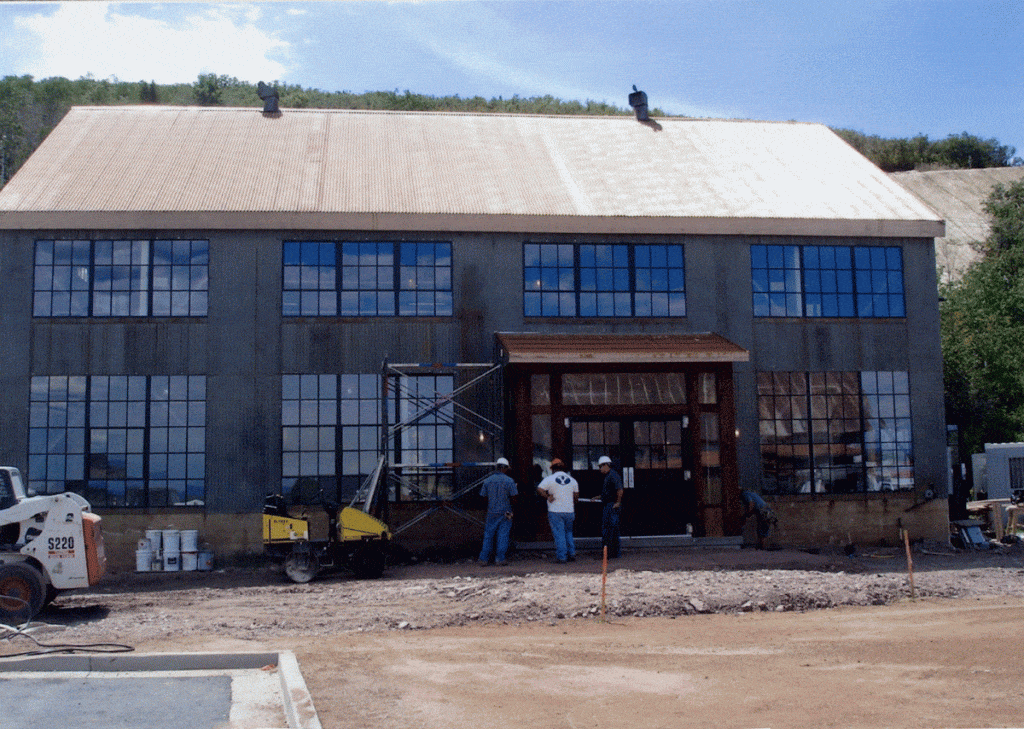Mining in Park City began in earnest in the 1870s, and by 1903 the terrain around Park City hosted over 80 significant mine openings (shafts or tunnels), as mapped by the U.S. Geological Survey (John Mason Boutwell, 1912).
At each of these mine openings, there were a variety of structures to support the mining operations, including shaft headframes, hoist and compressor houses, warehouses, maintenance shops, offices, and dwellings for mine employees. The larger mines also included large buildings for mills and tramways. Photographs of the day show smaller operations with just a few structures up to large complexes like the Daly West and Silver King Coalition mines with as many as 20 separate structures at each mine. But visit these same sites today and you might see only minor evidence of these structures, such as their concrete foundations.
The most common reason most of these mining structures disappeared is that they were torn down by their owners when no longer needed or worth the cost of maintaining. A few of the former mining facilities were repurposed and still stand today. For example, the Spiro tunnel and Thaynes shaft were repurposed in the early 1960s for the “skiers’ subway” ski lift. Three of the main mine drainage tunnels in the district are still maintained today as water sources. The former machine shop for the Spiro tunnel is also currently maintained as commercial space. One of the former boarding houses at the Silver King Coalition mine complex was moved to become the current Mid Mountain Lodge at PCMR.

Credit: Park City Historical Society & Museum
Another culprit for loss of structures are the severe winters in the Wasatch Back. Previously heated in wintertime, once the operations ceased and the buildings were cold, winter snows piled up on the roofs and against the walls, eventually leading to severe damage or collapse. There are multiple examples of old mine buildings suffering from these types of damage including the remaining Thaynes and Silver King buildings. Every year, more of the metal roofs and walls of these buildings collapse. The same was true for the roof of the Judge Mine & Smelter Company building in lower Empire Canyon. Although the walls of this building were built of durable concrete, the roofing and roof trusses were failing until the Empire Pass Master Owners Association stepped up to repair the roof a few years ago.
Another reason for the demise of old mine structures is fire, as many of the important mining structures around Park City were constructed of wood. Each mine complex included multiple fire water sources and hydrants for emergencies, but once a major fire started it was hard to control. Almost the entire surface plant of the Daly West mine and mill burned to the ground in December 1913 and was replaced by steel structures the following year. The recently raised Daly West headframe dates from that reconstruction. Ironically, the only wood structures remaining at the former Daly West mine site are three small sheds that enclosed fire hydrants. Another major fire occurred in 1920 when the Silver King Coalition mill burned and was completely replaced with the current, but decaying, steel structure in 1921.
There were other notable fires of mining facilities, but perhaps the most famous example of a local fire is the destruction of the Silver King Coalition Building in 1981. It was the iconic terminal for the Silver King Coalition aerial tramway that stood near the present site of the base of the Town Lift.
Physical evidence of Park City’s rich mining history is scarce, and the few remaining structures are imperiled for the above reasons (among others, including vandalism and underground shaft collapse). The Friends of Ski Mountain Mining History, a committee of the Park City Museum, is performing the important mission of stabilizing the few remaining historic mining structures in Park City’s hills. Learn more about their mission and accomplishments to date at parkcityhistory.org/mining/.
The Park City Museum and Friends of Ski Mountain Mining History are hosting an in-person lecture titled “Park City and Kennecott—Post-Mining Land Use at Two Historic Sites in Utah” given by Donovan Symonds, Amy J. Richins, and Michael G. Nelson on Wednesday, October 5 from 5-6 p.m. at their Education and Collections building at 2079 Sidewinder Drive. Register here.